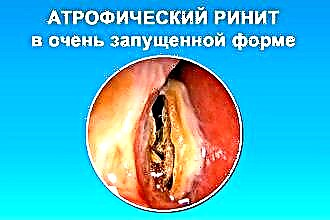Diseases of the cardiovascular system and the complications they cause are the leading cause of death in young people. The appearance of aching pain in the region of the heart, radiating to the back, is a characteristic sign of cardiac and non-cardiac pathologies. Differential diagnosis in the early stages is explained by different treatment tactics. Myocardial infarction, dissecting aortic aneurysm, high-class arrhythmias are accompanied by a threat to human life, therefore, they require urgent therapy, while having chronic pathologies of the spine, they are bypassed with planned treatment.
Causes
Features of the sensitive innervation of the chest are due to the large number of internal organs and the close location of the main nerve bundles.
In addition, in medicine, the concept of crossing the zones of external and visceral (from internal organs) sensitivity is used with the formation regions of Zakharyin-Ged... Therefore, the appearance of sharp pain in the heart from the back is due to the following conditions:
- injury to the neck, chest or spine with pinched nerve fibers;
- diseases of the esophagus - tumors, diverticula (abnormal protrusions of the muscle wall), strictures (narrowing caused by previous inflammation), varicose veins or rupture (perforation) of the wall;
- hernia of the esophageal opening of the diaphragm;
- osteochondrosis is a degenerative-dystrophic disease with damage to the intervertebral discs and vertebrae. It is characterized by pathological growth of bone tissue, increased stress on the spine with the development of radicular pain syndrome, most often in the thoracic region and lower back;
- intercostal neuralgia - pain that occurs along the nerve (most often in the intercostal spaces), associated with mechanical stress (spasmodic muscle or overgrowth of bone tissue presses on the nerve fiber, irritating it);
- myocardial infarction is an acute condition characterized by necrosis (death) of a part of the muscle mass of the heart due to impaired blood flow through the coronary vessels. More often occurs after the separation of an atherosclerotic plaque, the development of a thrombus (blood clot) or arterial spasm;
- dissecting aortic aneurysm is a violation of the integrity of the vascular wall associated with leakage of blood between the layers and further destruction of the artery. Pathology is characterized by an acute attack, in which the heart hurts and radiates to the back;
- angina pectoris is a variant of ischemic heart disease, when compressive pain behind the sternum is observed with irradiation to the back, scapula and left arm after physical exertion. The violation occurs due to a transient decrease in blood flow in the coronary vessels;
- acute bronchitis, tracheitis - inflammatory diseases of the mucous membrane of the respiratory tract.
In elderly patients, with curvature of the spine, diabetes mellitus, cardiovascular pathologies are atypical: the heart hurts from the back.
Pain in the region of the heart or back pain?
Cardialgia ("cardia" - heart, "algia" - pain) is a painful sensation in the chest area associated with heart diseases of various etiologies. Patients who have pain in the heart and back, undergo primary differential diagnosis to determine the urgency and specificity of medical care.
Consider the features:
- the connection of an attack with physical activity - the appearance of pain, shortness of breath and increased heartbeat at the end of the exercise indicates cardiac pathology. The resulting pain in the back and heart after a sharp turn of the trunk or head is more often associated with pinched nerves;
- respiratory act - pathologies of the respiratory system are characterized by an increase in pain syndrome when inhaling and when coughing;
- food intake - an increase in pain is observed when eating hot, cold and solid food in patients with esophageal pathology;
- the nature of the pain - paroxysmal stabbing - with angina pectoris, constant intense cutting - characteristic of the aortic aneurysm, dull for a long time - chronic inflammatory and non-inflammatory heart diseases;
- zones of irradiation - the spread of an unpleasant sensation in the left arm, scapula and lower jaw are characteristic of a heart attack, localization in the upper right part of the chest - a dissecting aortic aneurysm.
In addition, anamnesis (history of development) of the disease, the increase in the clinic and associated symptoms are taken into account.
For diseases of the esophagus, dysphagia (impaired swallowing), sensation of a foreign body behind the breastbone, heartburn, plaque on the tongue are characteristic.
With intercostal neuralgia, the constancy of the pain syndrome is observed: the intensity does not decrease at night, in contrast to osteochondrosis. A violation of sensitivity is noted with pronounced compression of the nerve: for several hours a limb becomes numb. A sharp pinching of the nerve root determines the characteristic posture of the patient: leaning forward, the patient holds his hand on one side (the affected side).
Acute cardiac pathologies (angina pectoris and myocardial infarction) are characterized by the sudden onset of pain, often to the left of the sternum. Additionally, they note a violation of the rhythm of the heart (tachycardia), loss of consciousness, a feeling of fear of death, severe shortness of breath.
What examinations to do
The effectiveness of treatment depends on the correct diagnosis, therefore, a clinical examination by a doctor and additional instrumental and laboratory research methods are used:
- electrocardiography (ECG) is a type of recording of the electrical activity of the heart, which is used to diagnose angina pectoris and myocardial infarction. The most informative is the recording during an acute attack of pain;
- echocardiography (ECHO-KG) is an ultrasound method for visualizing the chambers of the heart and great vessels. Used to diagnose dissecting aortic aneurysm, valvular defects and hemodynamic disorders after a heart attack;
- chest x-ray - for the diagnosis of rib fractures, acute bronchitis. Contrast examination of the abdomen can help diagnose hiatal hernia. Do not carry out to women during pregnancy due to the harmful effects of ionizing radiation on the development of the fetus;
- X-ray of the spine in the cervical, thoracic and lumbar regions - for the diagnosis of traumatic injuries or osteochondrosis;
- fibrogastroduodenoscopy is an endoscopic method of visualization of the hollow organs of the gastrointestinal tract, with the help of which changes in the mucous membrane of the esophagus and stomach are assessed.
Laboratory diagnostics involves the determination of an increased number of leukocytes (nonspecific markers of inflammation) and troponins (sharply increased - a marker of myocardial infarction).
Treatment methods
The attending physician prescribes therapy after analyzing the research results and making the correct diagnosis.
With severe neuralgic pain, the following groups of drugs are prescribed:
- non-steroidal anti-inflammatory drugs - "Diclofenac", "Nimesil", "Movalis" (gels - for topical use, powder - for the preparation of oral solution);
- diuretics - to relieve edema (Furosemide, Hydrochlorothiazide, Spironolactone);
- reduction of muscle spasm - "Midocalm";
- improvement of metabolic processes - vitamins of group B ("Neurorubin").
With cardialgia (angina pectoris or heart attack), the following treatment tactics are used:
- vasodilators: "Nitroglycerin" - one tablet under the tongue;
- antiplatelet drugs (reducing blood viscosity): "Acetylsalicylic acid", "Clopidogrel", "Ticagrelor";
- oxygen therapy.
In case of a heart attack, anticoagulants are used ("Heparin", "Enoxaparin"). Restore blood flow through the damaged area using percutaneous coronary intervention (stent placement).
For pains of a different origin, depending on the diagnosis, the following therapy scheme is used:
- acute bronchitis or tracheitis - antipyretic and antitussive drugs, inhalation with antiseptic solutions. If necessary, antibiotic therapy;
- dissecting aortic aneurysm - urgent surgical intervention;
- diseases of the esophagus - antisecretory drugs ("Ranitidine", "Pantoprozole"); ruptures, diverticula and hernias require surgical treatment.
Patients whose back pain radiates to the heart, nonspecific therapy begins after excluding acute myocardial ischemia, aortic dissection or rupture of the esophagus.
Conclusions
The appearance of pain with localization in the sternum is caused by pathologies of the heart and structures located behind the pericardium. Determination of the main cause using the detailing of the pain syndrome (nature, intensity, irradiation and connection with breathing, physical activity and food intake) helps to choose further diagnostic tactics.
More often, pain of this localization is characteristic of myocardial ischemia or damage to nerve fibers. Patients who have a aching heart or back are prescribed instrumental and laboratory procedures confirming a certain diagnosis, after which they select adequate therapy aimed at eliminating both the symptom and the cause of the onset of pain.



